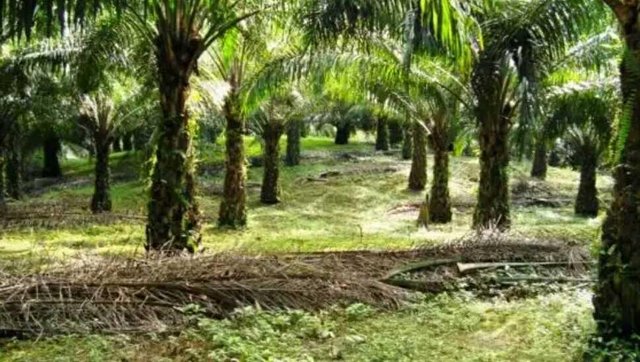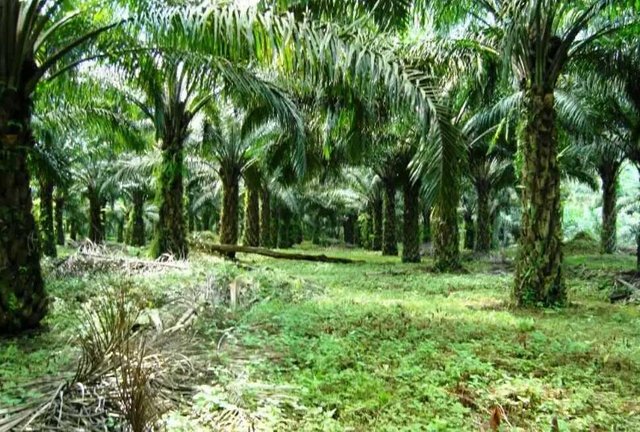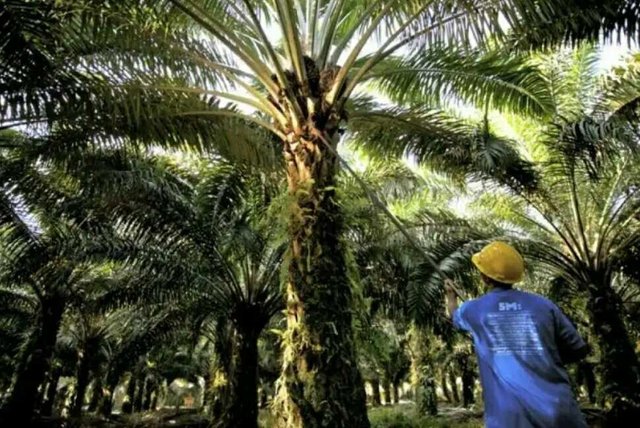How to Plant Oil Palm on Peat Land
How to Plant Oil Palm on Peat Land

How to Plant oil palm by utilizing peatlands should be the last option if it is not possible to cultivate on mineral land. This is also due to the importance of the existence of peatlands in support of ecological and economic balance. Peatlands are a habitat for biodiversity, forest product providers and also groundwater storage.
In order to preserve nature, clearing of peatlands for oil palm plantations should only be done on degraded lands. While the peat forest area is still beautiful it would be nice to be preserved. Do not get because wanting to gain personal gain, harm other parties.
How to plant oil palm on peatlands

1. Surveys will be like land
Before the planting of oil palm begins, it is necessary to conduct a survey first to assess the feasibility of peatlands to be used as a cultivation area. Aspects to note include the legality of the land and also the characteristics of the land to be used. Also do research to determine the maturity of peat, depth of peat, frequency and duration of genanan and also the depth of pyrite layer.
2. The opening of the right land
The right moment of opening of peatlands must be done by zero burning method or not burning forest land. Because the burned land will cause the soil to become dry and barren. Many of the nutrients contained in organic materials are destroyed, the loss of natural predators of palm oil pests, and also the release of harmful carbon. Environmental conditions also suffered degradation along with the decline in peatland quality and the breakdown of the hydrological cycle.
3. Water management
The mangrove peatlands will be very difficult to wet again. Therefore, proper water resources management is required. By way of building a castle as a retainer of sea water, a trench to collect and channel water into the garden, as well as a sluice gate to maintain the water level. The aims of water management can, among other things, defend water sickness of about 50-75 cm, prevent drying of the soil, prevent pyrite oxidation, prevent salt accumulation and eliminate toxic substances.
4. Peat soil compaction
Soil conditions in peatlands are still not stable so if planted with oil palm, then the direction of growth will doyong. The soil needs to be compacted first so that the boost power increases. This allows the position of oil palm planted is not easily shaky and has an upright posture.
5. Construction of facilities and infrastructure
Building supporting facilities and infrastructure in oil palm planting includes the installation of wooden drawings, geotext membrane and landfill with mineral soil. Then peatlands should also be flattened, applied and hardened using a mixture of gravel, sand and stone. The better the road conditions in the garden, will certainly facilitate the distribution and maintenance of equipment.
6. Work on good technical culture
Doing this covers all the work that is applied to oil palm cultivated plants. With the effort of dig production, repayment, maintenance of TBM and TM, weed control, pest and disease eradication and harvesting. Necessary arrangements on road maintenance, quality improvement and maintenance of harvest facilities.
7. Fertilization of plants
The fertilizer used in the fertile peatland is the same as the mineral land. However, in this peatland, containing Ca and Mg is higher than K aka it is necessary to perform certain fertilization techniques. For example, no calcification is required, KCL administration with 3-5 kg / tree / taun dosage, and addition of micro fertilizers such as Cu, Zn, Fe da also B.
8. Monitoring of fire
Peatlands are particularly vulnerable to fires. Need to monitor the possibility of land fires. Some supporting facilities and infrastructures that need to be built include the control tower, fire extinguisher, fire hazard level and also fire control organization.
How to plant the oil palm needed nutrients to meet the needs of his life. Through the process of photosynthesis, this nutrient element is processed into organic material as a source of energy to support growth. Therefore, the role of nutrient element for a plant can not be dinganti with other elements. Oil palm-deficient coconut will experience a specific gelaja in certain parts of the organ known as gobalan kerahatan.
Based on the level of need, nutrient elements needed palm oil can be divided into two acam namely macro nutrients and micro nutrients.
Macro nutrient elements are nutrients needed by plants in considerable quantities. Nutrient elements included in this category are nitrogen, phosphorus, potassium, mangenesium, calcium and sulfur.

1. Nitrogen (N)
Nitrogen plays an important role in oil palm planting as a process of forming cells, tissues and also plant organs. Its main functions are used as synthetic materials, proteins, chlorophyll and amino acids that regulate plant growth. There are two forms of nitrogen including ammonium (NH4) and nitrate (NO 3). Nitrogen-deficient plants have yellowing leaves, easy to fall, slow growth and low productivity. Conversely, if the excess nitrogen, plants have many leaves and susceptible to insect pests and diseases.
2. Phosphorus (P)
Phosphorus determines the genetic properties of plants, organ growth and influences on flowering. Oil palm that lacks phosphorus will appear charred in some parts. Meanwhile, if it contains too much phosphorus, the absorption of other nutrients will be disrupted.
3. Potassium (K)
Its usefulness to regulate the process of photosynthesis. Plants that lack of potassium causes the leaves look charred and easily fall. Meanwhile, if excess potassium will inhibit the growth and absorption of other nutrients.
4. Mangenesium
In the way of palm oil planting magnesium required palm oil as energy transportation of a number of enzymes. If this content is too little, consequently a number of unsure needed plants to process photosynthesis becomes not transported. It is characterized from the appearance of yellow spots on the surface of the old leaves. Whereas palm oil plant excess magnesium will not cause a fatal effect. '
5. Calcium (Ca)
The role of calcium to encourage cell growth, strengthen tissue, regulate cell penetration and also care for cell walls. The Ca nutrient element mainly affects root growth rate. Plants that lack calcium will have a weak root system, little flower production and small daunya. While the influence of calcium content is too much to affect the level of soil acidity.
6. Sulfur (S)
It takes sulfur to form amino acids such as cystine, cysteine and methionine. Plants that lack sulfur cause protein sistesis is inhibited and cause chlorosi. This is usually characterized by the yellowing of yellow leaf color due to the very low nutrient distribution.
The planting of oil palm requires a Micro nutrient element, this is the nutrient needed by oil palm in small quantities. Some elements classified as micro elements include boron, copper, zinc, iron, molybdenum, manan, chlorine, sodium, cobalt, silicon and nickel.
Congratulations! This post has been upvoted from the communal account, @minnowsupport, by qira from the Minnow Support Project. It's a witness project run by aggroed, ausbitbank, teamsteem, theprophet0, someguy123, neoxian, followbtcnews, and netuoso. The goal is to help Steemit grow by supporting Minnows. Please find us at the Peace, Abundance, and Liberty Network (PALnet) Discord Channel. It's a completely public and open space to all members of the Steemit community who voluntarily choose to be there.
If you would like to delegate to the Minnow Support Project you can do so by clicking on the following links: 50SP, 100SP, 250SP, 500SP, 1000SP, 5000SP.
Be sure to leave at least 50SP undelegated on your account.